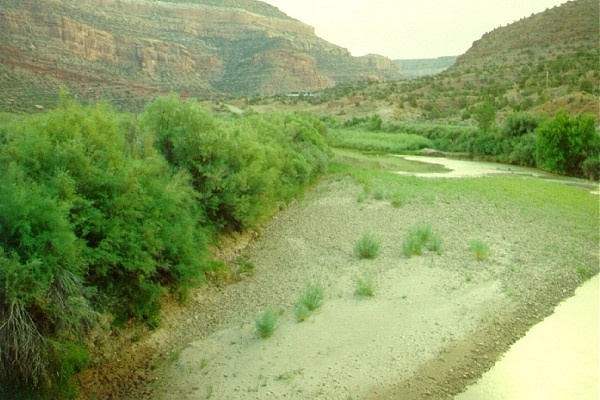 |
The Global Invasive Species Team |  |
|
|
|
Introduction First slide Slide #5 Slide #10 Slide #15 Slide #20 Slide #25 Slide #30 Slide #35 Slide #40 Slide #45 Slide #50 Slide #55 Slide #60 Slide #65 Slide #70 Last slide |

|
|||
| Some invasive plants can alter the hydrology of wetlands and waterways or the water tables of more upland areas. Here saltcedar (Tamarix sp.) has invaded the floodplain of the Dolores River in western Colorado as it has in other riparian and wetland areas across the southwestern U.S. and adjacent Mexico. Tamarisks often form dense thickets and it has been suggested that these use more water per unit area than native vegetation. In some areas such as Death Valley National Park and Coachella Valley Preserve desert seeps, springs and pools which are vital for the survival of many native animals have dried up following tamarisk invasion only to start flowing again after the tamarisk thickets were removed. | ||||
| Slide 24 |
|
